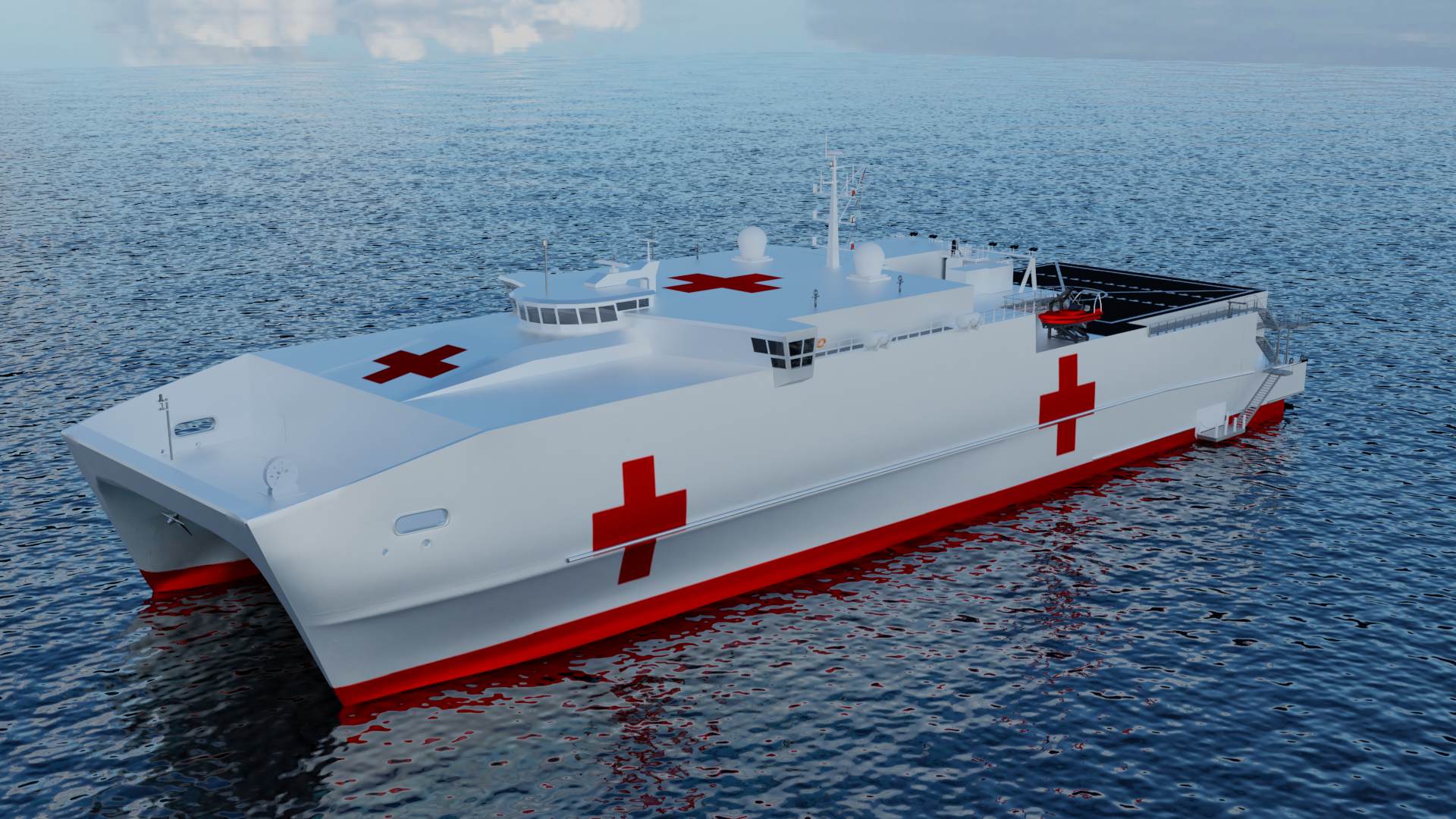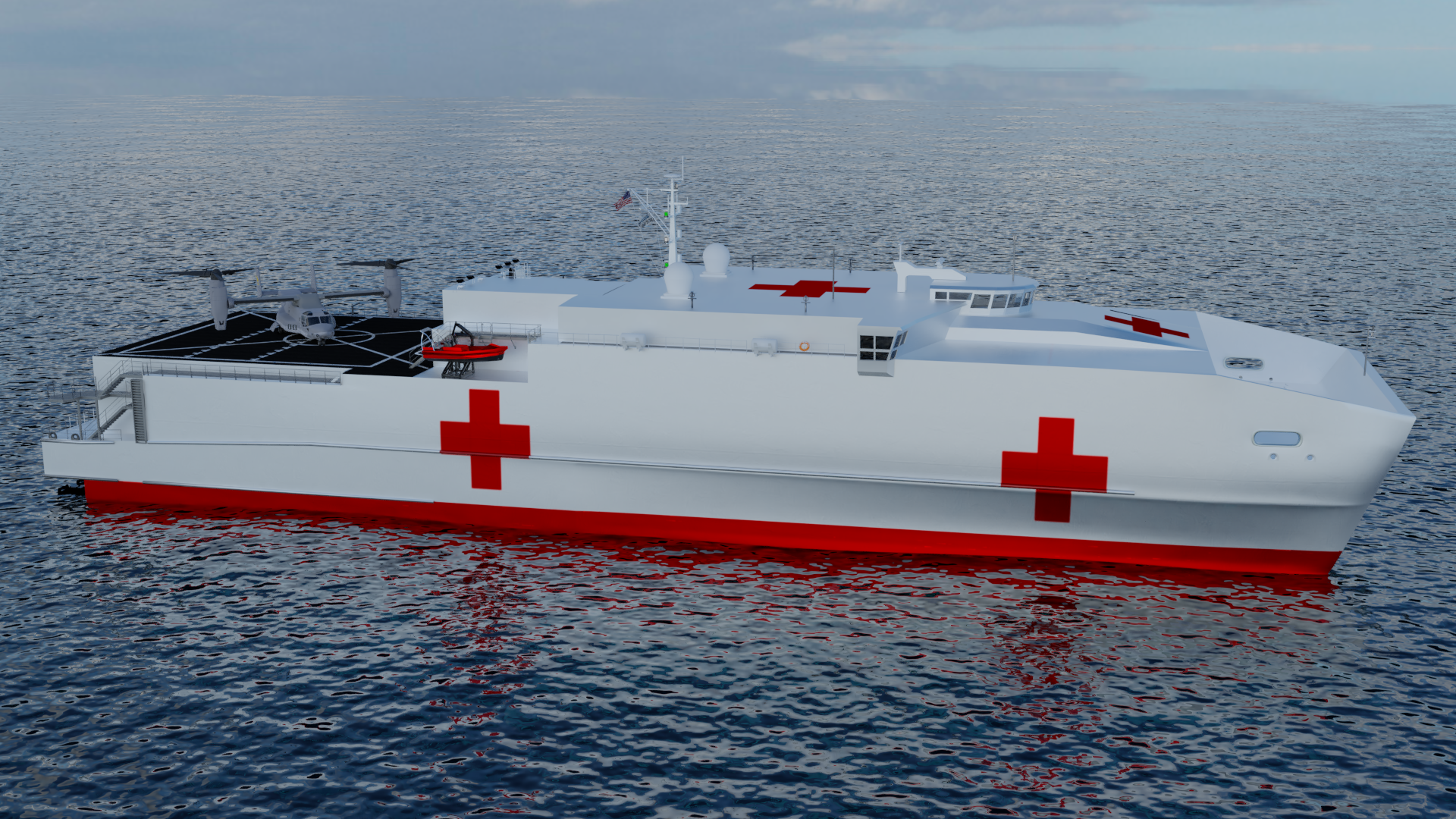
As Austal USA prepares to negotiate the contract for the final planned expeditionary fast transport (EPF) vessel, the shipbuilder is actively exploring how to keep the production line hot by pitching the hull as a solution for other Navy needs, such as providing medical services in austere coastal environments.
“As well as EPF is performing in the fleet, we think there’s a very strong possibility the line will continue and maybe should continue,” Larry Ryder, senior director of business development and customer affairs for Austal, told USNI News. “I absolutely think there can be more buys.”
There are a few reasons more buys are possible, Ryder said, citing the hull’s adaptability, growing familiarity with Navy fleet commanders and its relatively low cost. Total orders for the class so far are worth roughly $2.7 billion, according to the company’s financial statements, which equates to about $225 million per-hull for the first 12 built.
Navy leaders are learning the value of the EPF hull as they enter service, experimenting with missions, Ryder said. Recently, USNS Carson City (T-EPF-7) was outfitted with a mine countermeasures package during the multinational Baltic Operations (BALTOPS) exercise – a first for the class. This also marked the first time an EPF conducted high-latitude operations.
As the Navy uses the EPF for more missions, Ryder said the feedback from the fleet is being used to improve on the design. For instance, he said Austal is working on enhancing the EPF’s ability to launch and recover boats and unmanned vehicles and making the EPF flight-deck capable of handling the MV-22B Osprey.

By the mid-2020s, Ospreys are planned to become the Navy’s primary carrier onboard delivery aircraft. Accommodating the V-22s could prove vital for Austal’s plans to continue EPF production in the U.S., especially if Austal hopes the EPF gets serious consideration from the Navy as a possible hospital ship of the future.
Supporting the Osprey is going to be a requirement of any design, said Vice Adm. Bill Merz, during an April House Armed Services seapower and projection forces subcommittee hearing. During the hearing, Merz said the Navy had commissioned a Requirements Evaluation Team to look at a variety of missions, including a distributed hospital capability.
For Ryder, the notion of distributed hospital capability fits in with the EPF’s strengths – it’s affordability and relatively small crew size. The Navy could afford more than a couple of such smaller hospital ships, and disperse their homeports, including at forward-deployed locations, Ryder said.
But Austal is not alone in pitching the idea of building multiple hospital ships, including ones which would come off a hot production line and could be forward deployed. Huntington Ingalls Industries officials have suggested adapting their San Antonio-class dock landing ship hull to accommodate afloat medical facilities.
Even as the Navy is still researching requirements for a possible new hospital ship, a 2014 Naval Surface Warfare Center Carderock Division report suggested the LPD-17 hull could serve as a parent for the new hospital ship design.
Part of the HII pitch for considering the LPD-17 design is the Navy has already committed to the LPD Flight II design as a replacement for the Whidbey Island-class LSD, and ultimately plans to buy 13 of the Flight II hulls. HII’s hospital ship concept would be built form a Flight IIA design, benefiting from the existing production line and the design’s flexibility, according to HII.
In May, Brian Cuccias, president of Ingalls Shipbuilding, told USNI News, “I believe it’s important that industry helps the Navy, helps with their innovation. We have all the experience with amphibs in the country, we’ve basically done all the amphibs, so we have a huge engineering department and a huge great insight in terms of what can be done, what capabilities can be done.”





